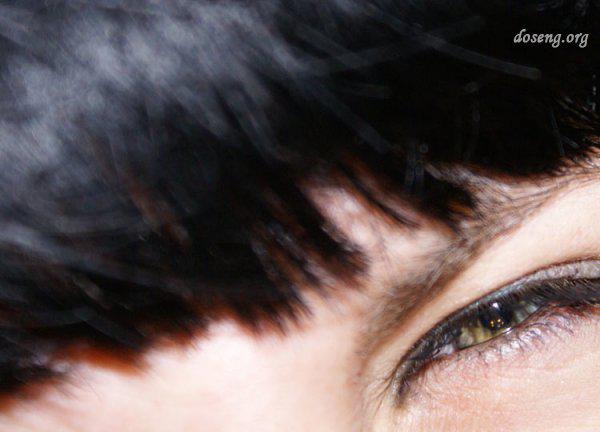Interesting facts about vision
 Bashny.Net
Bashny.Net

Swedish biologists Dan-Eric Nilsson and Susanne Pelger from Lund University have simulated on the computer history of the evolution of the eye. In this model, it all began with the appearance of a thin layer of cells that are sensitive to light. Above him was a transparent tissue, which penetrates through the light; under it - an opaque layer of tissue.
Some minor mutation could be changed, for example, the thickness of the transparent layer or the curvature of the photosensitive layer. They came by accident. Scientists have made a mathematical model in his rule: if a mutation improves image quality at least one per cent, it was fixed in subsequent generations.
In the end, "visual film" turned into a "bubble" filled with a transparent jelly, and then in the "fish-eye" lens equipped with this.
Cats, like all predators, nocturnal, see well in the dark. In the darkness of their pupils dilate markedly, reaching a diameter of 14 millimeters. In humans, the pupil diameter is less than eight millimeters. So, the cat takes a lot less light than a person to distinguish objects and other animals.
In addition, cat's eye arranged differently. In its depth, behind the retina, there is a special reflective layer - Tapetum lucidum. He discards the light entering in the cat eye. That's why the cat's eyes glow in the dark yellow or green. Due to this feature visual cells located on the retina of her eyes get twice as much light.
The human eye has two types of light-sensitive cells: rods and cones. Sticks distinguish dark and light. Thanks to them we have at least something to see at night. The cones perceive color. The cat - the same two types of cells. That's only if a person has one flask are four sticks, then purring - twenty-five! That's why the cat is much worse than we see colors. Thus, the red color completely unavailable to them. World Cat looks washed out and pale. The scientific wisdom says: "During the day all around the gray cat." Only a few colors - for example, the blue - it brightens the horizon.
Seeing the birds is phenomenal. For example, a kite with a height of 2000 meters notice carrion lying on the ground. The eyes of a bird of prey is truly unique binoculars.
Arranged bird's eye in a different way than we do. In the middle of the fundus a person has a "yellow spot". Here, most light-sensitive cells. This is - the area of most acute. In our eye - only one "yellow spot", but the birds - there are two. They can equally well to see two objects at once, being away from each other. For thrush in the same moment he can closely scrutinize the worm, which planned to seize, and a cat that sneaks to himself.
The second "yellow spot" is a little deeper than the first. It increases the subject who looks at the bird. That's why birds eye "like binoculars».
If we take the visual acuity of an eagle for 100 percent, a person's vision is only 52 per cent of the eagle's view. But what is the ability of some other species:
Octopus - 32 per cent of an eagle's view;
Spider-racer - 9 percent;
cat - 7 percent;
Goldfish - 5 percent;
rat - 0, 7 percent;
Drosophila - 0, 07 percent;
Planaria (Turbellaria) - 0, 009 percent.
Visual acuity is also connected with how well the eye can see objects at different distances. For this purpose it is "adapted" to them. This property is referred to as accommodation. In humans as in other mammals, changing the lens curvature. When we look at an object lying close, the lens more curved, and it changes its refractive power or optical power. This ability is measured in diopters.
The young man looks easy from the near to the far background of the plan. The lens of the eye it is very elastic and changing its refractive power of 14 diopters. But his favorite dog deprived of this talent. She optical power of the lens can be increased only by one diopter. In these natural inclinations can see well at a distance or away from you, or straight ahead. So, hounds dogs farsightedness.
Cats also can best see objects that are away from them. Particularly well they see at a distance of two to six meters. This is great for hunting birds or mice
Especially amazing lens from cormorants. It changes the optical power of 50 diopters. Therefore Cormorant could equally well be seen in the air and under water.
And a few more facts:
Look carefully at the Big Dipper. If some middle star in the handle of the bucket you will clearly see a small star, then your eyes have normal sharpness. Such a method of testing has been adopted by the ancient Arabs.
To sneeze with your eyes open is impossible.
A minute in darkness eye sensitivity to light increases by 10 times through 20 min. - 6 thousand. Times.
Eye large whale weighs about 1 kg. Monocular vision in cetaceans. Many whales do not see things ahead of its snout.
Cockroaches also have infrared vision. Cockroach whiskers not only touch, but also smell.
Highlighting eyes red for 2-3 minutes increases the sensitivity of the night for half an hour ... In this way, the scouts used the army, in the First World War.
Tags
See also
Interesting facts about food
5 most interesting facts about football
Brain tricks
10 possible forms of life
6 facts about holography, which you might not know
Ranger Special Forces Spetsnaz Swedish
The discoveries made with Google Earth (5 photos)
Artillery tractor
Part 2. How many Mbit / s can be passed through the optic nerve and the retina at a resolution? Some theory
Most parole

















